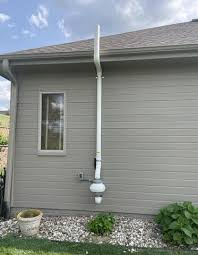VLADIMIR LEVIN
REGISTERED
In new construction, does the radon pipe need to actually penetrate the roof or can it be brought to the underside of the sheathing?
AF103.1 says its "...intended to prepare the building for post-construction radon mitigation, if neccessary"
Installing all the piping "prepares" the building, and if needed in the future a roof penetration can be made then.
AF103.1 says its "...intended to prepare the building for post-construction radon mitigation, if neccessary"
Installing all the piping "prepares" the building, and if needed in the future a roof penetration can be made then.


